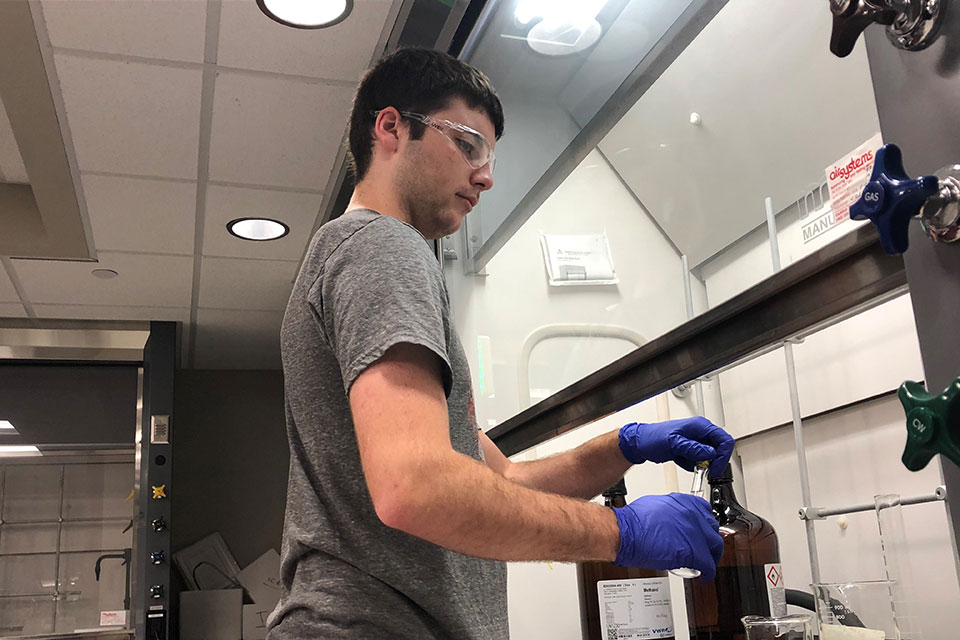Research Cracks Open the Tiger Nut
Found throughout the Eastern Hemisphere, Cyperus esculentus looks a lot like wild grass. Cultivated as a crop, this plant produces tiger nuts—small, wrinkly tubers resembling a cross between a peanut and a hazelnut.
Tiger nuts have a historic reputation as a superfood going as far back as Ancient Egypt, but today, they lack the fame enjoyed by cashews and pistachios. There’s not much academic literature on the chemical make-up of these nutty snacks, either. St. John Fisher College chemistry professor Dr. Irene Kimaru and student Trevor Smith are teaming up to close some of that knowledge gap through a summer research project.
Kimaru, an associate professor of chemistry, first learned about the tiger nut through School of Business finance professor Dr. Alex Abakah, who brought her a sample of Ghanaian Tiger nuts because of his curiosity about its fiber content. She saw the sample as an opportunity to uncover its chemical properties and add to the small body of research about the nut.
“Because I’m a chemist, I wanted to know more than just the fiber content. I wanted to know more about its nutritional and medicinal value, as well,” she said, adding that the high fiber and calcium content of the nut could have several health benefits.
To explore the chemical components of the nut, Kimaru developed a research project with Smith, who is working as a Summer Research Fellow. Under her mentorship, Smith is analyzing the chemical composition of ground tiger nuts from Ghana to obtain data on the content of fiber, lipid, fatty acids, minerals, protein, and carbohydrates. Such data will inform on the nutritional and medicinal values of the nuts.
Smith is also learning about the research process along the way. A junior majoring in chemistry with a minor in mathematics, he jumped at the opportunity to engage in summer research and bring to life what he has learned through his coursework.
“Everything I’ve learned in class I’ve applied at some point this summer,” he said. “And, I’ve gained direct experience working with all of the lab equipment.”
Kimaru said that research collaborations like the summer program give students exposure to projects outside the range of undergraduate-level work, building student confidence and giving them a competitive advantage after graduation.
“Research opportunities take students to places they’ve never imagined,” she said. And in this case, provides a unique food sample to crack open and study.

